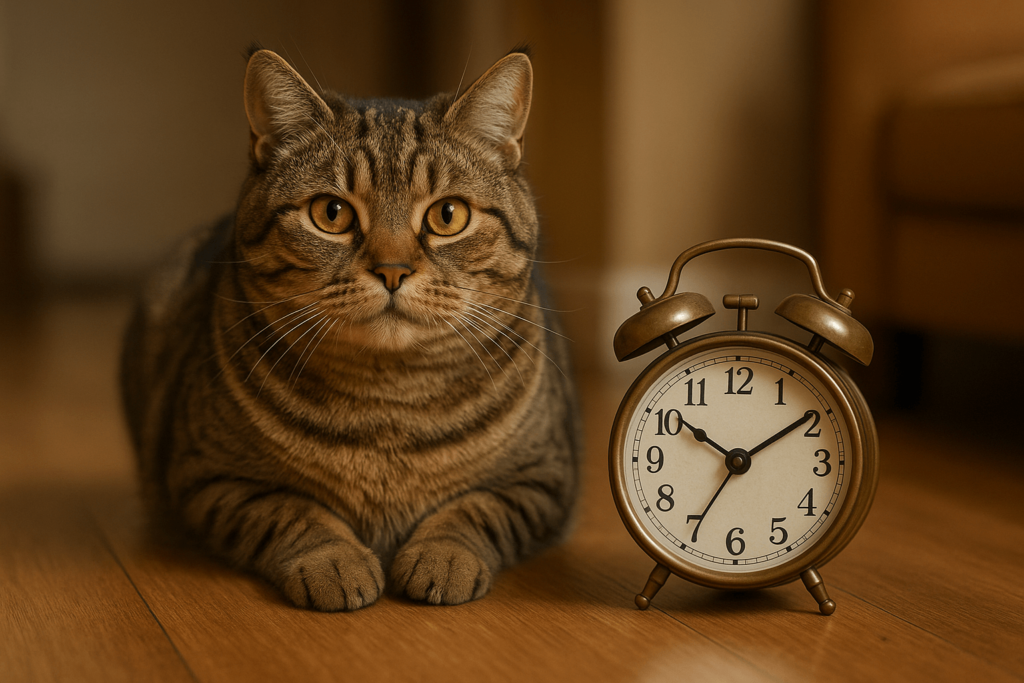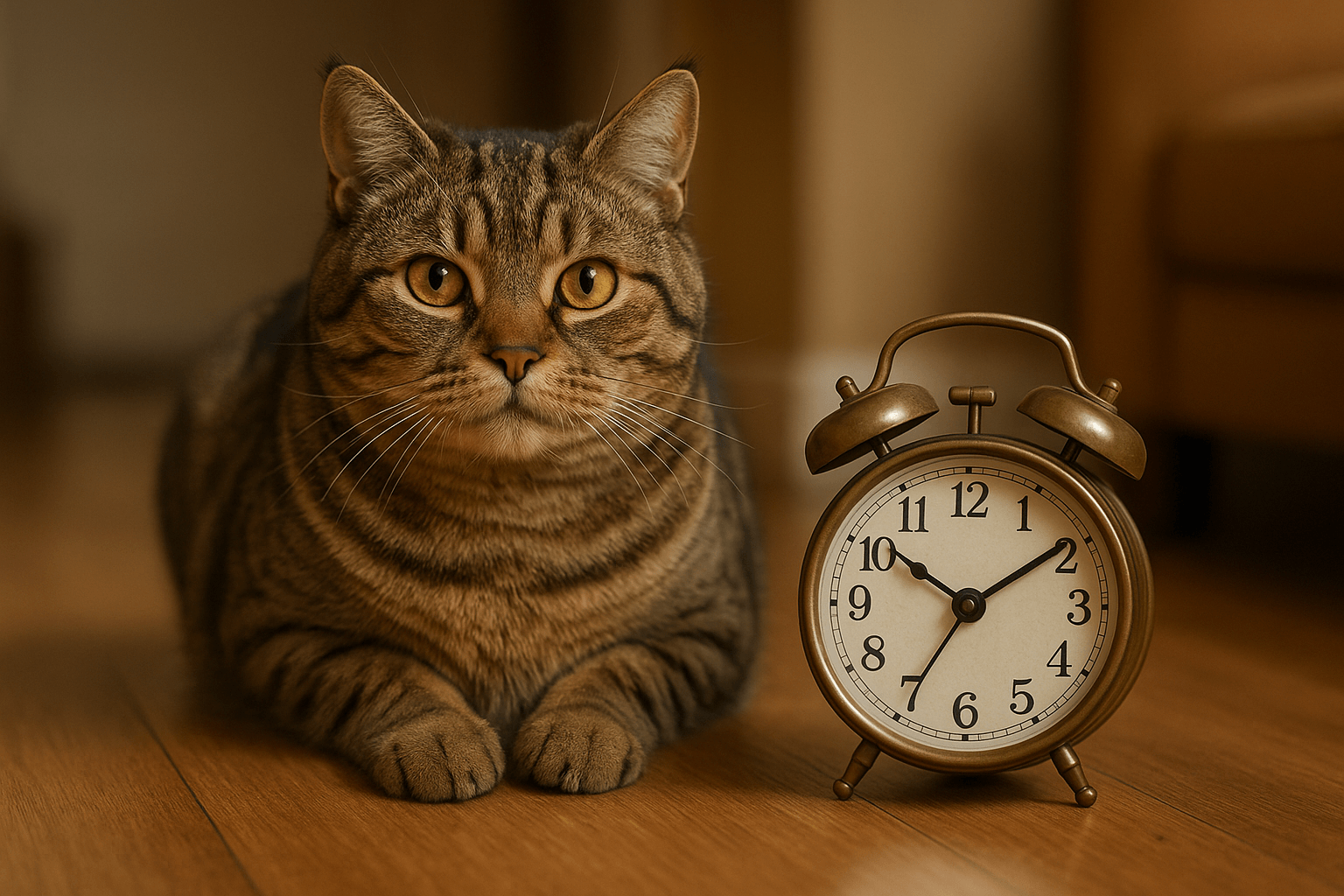Manx Cat Lifespan: What to Expect from Your Tailless Companion
The Manx cat is a living legend—mysterious, muscular, and utterly unique with its tailless or short-tailed silhouette. But beyond its striking appearance lies a question every owner wonders: How long will my Manx cat live? The answer isn’t simple. While many Manx cats enjoy long, vibrant lives, their distinctive genetics come with special considerations. Understanding the Manx cat lifespan means looking beyond averages—it means knowing their health risks, their needs, and how to give them the best possible years.
What Determines a Manx Cat’s Lifespan?
A Manx cat’s longevity isn’t just about luck—it’s shaped by genetics, environment, and care. These cats aren’t just “tailless tabbies”; their biology carries unique challenges and strengths.
Genetic Heritage:
The Manx gene responsible for taillessness can also impact spinal development—making responsible breeding essential for long-term health.Diet and Nutrition:
High-quality, species-appropriate food supports joint health, immune function, and overall vitality, directly influencing lifespan.Indoor Living:
Indoor Manx cats typically live significantly longer than outdoor cats, protected from traffic, predators, and infectious diseases.Regular Veterinary Care:
Preventive checkups catch early signs of spinal or digestive issues, allowing timely intervention before they become life-limiting.Mental and Physical Stimulation:
Engaged, active cats experience less stress and better cognitive health, which contributes to a longer, happier life.
A Manx cat’s potential to live 12–16 years—or even longer—isn’t guaranteed. It’s earned through thoughtful, consistent care.

Common Health Issues That Can Affect Manx Cat Longevity
The very trait that makes the Manx so captivating—the absence of a tail—is also linked to a cluster of potential health concerns. Being aware of these helps you act early.
Manx Syndrome:
A serious condition caused by the same gene that eliminates the tail, leading to spinal malformations, nerve damage, or bowel/bladder dysfunction.Spinal Issues:
Even cats without full Manx syndrome may develop arthritis or nerve compression in the lower spine as they age.Arthritis and Joint Pain:
The altered spine and hindlimb structure can lead to early-onset joint degeneration, especially in less active cats.Digestive Problems:
Some Manx cats suffer from megacolon or constipation due to nerve irregularities affecting the colon.Obesity Risk:
Their stocky build and sometimes sedentary nature make them prone to weight gain, which worsens joint and metabolic health.
These conditions aren’t inevitable—but they are common enough to warrant vigilance. Early detection through vet visits and attentive observation can dramatically extend your cat’s quality and length of life.
Check this guide 👉Understanding Manx Cat Weight: Best 7 Expert Tips!
Check this guide 👉Tortoiseshell Manx Cat: Best 7 Expert Tips!
Check this guide 👉Manx Cat Price: Best 7 Expert Tips!
| Factors That Extend Lifespan | Factors That Shorten Lifespan |
|---|---|
| Strictly indoor lifestyle | Outdoor exposure to traffic or predators |
| High-protein, low-carb diet | Poor-quality kibble leading to obesity or diabetes |
| Routine vet visits (twice yearly) | Delayed diagnosis of Manx syndrome or arthritis |
| Regular nail trims and dental care | Neglected dental disease causing systemic infection |
| Mental enrichment and daily play | Sedentary lifestyle leading to muscle atrophy |
The Role of Responsible Breeding in Manx Cat Health
Not all Manx cats are born equal. Breeding practices have a profound impact on whether your cat lives a long, pain-free life.
Avoid “Rumpy” to “Rumpy Riser” Breeding Pairs:
Mating two tailless cats significantly increases the risk of Manx syndrome. Reputable breeders avoid this.Choose Cats with Tails or Stubby Tails:
Cats with longer tails (called “longies” or “stubbies”) often have fewer spinal complications and are healthier overall.Ask for Health Clearances:
Reputable breeders provide genetic testing records and documentation of screening for spinal and digestive issues.Beware of backyard breeders:
Cats from unregulated sources are more likely to carry hidden genetic defects due to inbreeding or poor selection.Adopt from Rescues:
Many shelter Manx cats are already past the critical early-risk period and can live full, healthy lives with proper care.
Choosing a Manx isn’t just about aesthetics—it’s about ethics. A healthy spine starts before birth.
How to Spot Early Signs of Spinal or Neurological Problems
Manx syndrome often manifests in the first few months of life—but subtle signs can appear later. Knowing what to look for saves lives.
Difficulty Jumping or Climbing:
If your cat suddenly avoids heights they once loved, it may signal spinal discomfort or nerve weakness.Limping or Unsteady Hind Legs:
Dragging paws, wobbling, or frequent falls are red flags for nerve compression or muscle atrophy.Incontinence or Constipation:
Inability to control bladder or bowels is a hallmark of Manx syndrome and requires immediate veterinary attention.Sensitivity to Touch Around the Lower Back:
Flinching, hissing, or avoiding being picked up near the tail area can indicate pain.Abnormal Gait or Tail Twitching:
Even cats with short tails may exhibit involuntary muscle spasms or a stiff, awkward walk.
These aren’t quirks—they’re warnings. Don’t dismiss them as “just how Manx cats are.” Early intervention can prevent irreversible damage.
Diet and Nutrition: Fueling a Long, Healthy Life
A Manx cat’s diet is not a suggestion—it’s a cornerstone of longevity.
Prioritize High Animal Protein:
Choose foods where chicken, turkey, or fish are the first three ingredients. Avoid fillers like corn, wheat, or soy.Limit Carbohydrates:
Cats are obligate carnivores. Excess carbs contribute to obesity, diabetes, and inflammation—all enemies of a long life.Hydration Is Critical:
Wet food provides essential moisture. Dry food alone increases kidney and urinary strain, especially in cats with mobility issues.Joint-Supporting Supplements:
Glucosamine, chondroitin, and omega-3 fatty acids can slow arthritis progression and improve mobility.Portion Control:
Feed measured meals, not free-choice. Manx cats are prone to overeating and weight gain, which strains their spine and joints.
What you feed your Manx today shapes how they move, feel, and live tomorrow.
Exercise, Enrichment, and Daily Care for a Thriving Manx
A healthy Manx isn’t just fed well—it’s mentally and physically engaged.
Daily Play Sessions:
Use wand toys, laser pointers, or feather teasers for 10–15 minutes twice daily to stimulate movement and prevent boredom.Vertical Space:
Provide cat trees, shelves, or window perches. Even with mobility challenges, climbing satisfies instinct and builds muscle.Interactive Feeders:
Slow-feed puzzles turn meals into mental games, reducing stress and encouraging activity.Grooming Routine:
Brush weekly to prevent mats, especially in longhaired Manx. This also gives you a chance to check for lumps, skin issues, or pain responses.Safe Environment:
Remove slippery floors, provide ramps instead of stairs, and ensure litter boxes have low sides for easy access.
Stimulation isn’t luxury—it’s medicine. A bored, inactive Manx is a vulnerable Manx.
When to Expect the Longest Lifespan: Age Milestones
Manx cats mature slowly and often remain playful into their teens. Knowing their life stages helps you adapt their care.
Kitten (0–1 year):
Monitor closely for signs of Manx syndrome. Growth spurts can reveal hidden spinal issues.Adult (1–7 years):
Peak health years. Maintain diet, weight, and vet visits. Begin joint supplements if recommended.Mature (8–12 years):
Watch for early arthritis. Switch to senior-formulated food if needed. Increase comfort with orthopedic beds.Senior (13+ years):
Focus on pain management, hydration, and easy access to food, water, and litter. Bloodwork every 6 months is ideal.
Many Manx cats live well past 15—with some reaching 18 or even 20—when given optimal care. Their resilience is remarkable.
FAQ: Manx Cat Lifespan
How long do Manx cats usually live?
Most healthy Manx cats live 12–16 years. With exceptional care, many reach 18–20 years.
Do all Manx cats have health problems?
No. Only cats from irresponsible breeding or those inheriting two copies of the tailless gene are at high risk. Many live completely healthy lives.
Can Manx cats live outdoors?
Not recommended. Their mobility challenges and lack of tail (which aids balance) make them vulnerable. Indoor living is safest.
Is Manx syndrome fatal?
In severe cases, yes—especially if it affects bowel/bladder function. Mild forms may only cause discomfort. Early detection is key.
Do Manx cats need special litter boxes?
Yes. Choose low-sided, spacious boxes for easy access. Avoid covered boxes if your cat has mobility issues.
Celebrate Their Strength—Not Just Their Look
The Manx cat doesn’t just live with a unique shape—they live with resilience. Their taillessness isn’t a flaw; it’s a legacy of survival, mystery, and adaptation. But their longevity isn’t written in their genes alone—it’s written in your choices. In the meals you serve. In the vet visits you schedule. In the toys you offer and the floors you make safe.
A Manx cat’s life isn’t measured in years—it’s measured in purrs, leaps, and quiet moments of trust.
Canned Pumpkin for Cat Diarrhea: Best 7 Expert Tips! Natural remedy to firm stools, soothe upset bellies, and support gut health safely.
Can a Cat Give You Scabies? Best 7 Expert Tips! Discover the truth about feline mites, human skin risks, and how to protect yourself—without panic.
Cat Flea vs Human Flea: Best 7 Expert Tips! Discover the truth about bites, species, and how to eliminate infestations for good.
Weird Cat Behaviors: Best 7 Expert Tips! Discover why cats do strange things—and how to understand, not punish, their instincts for a happier home.





